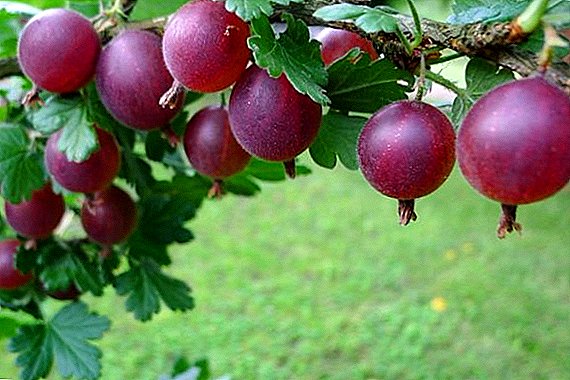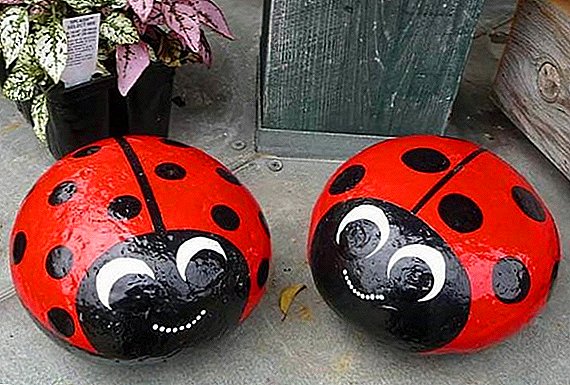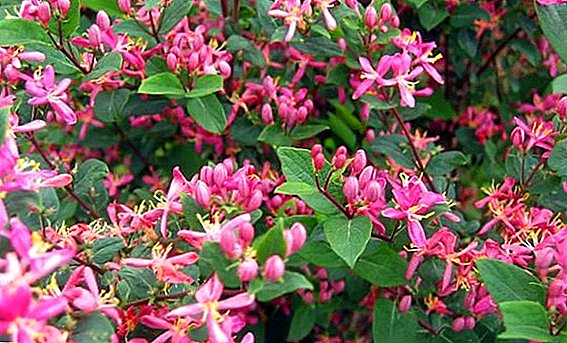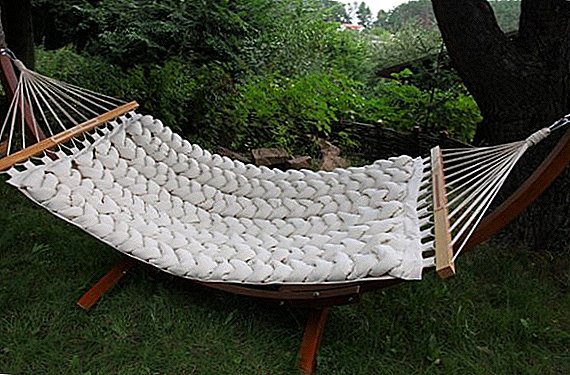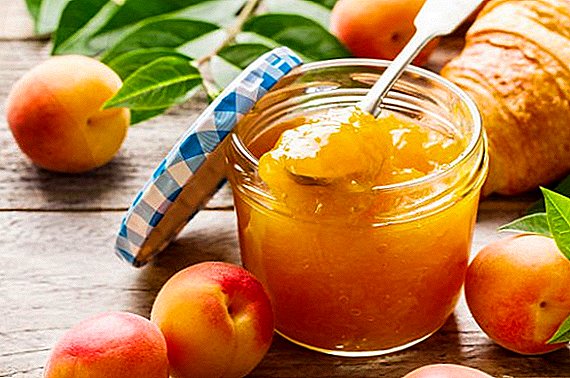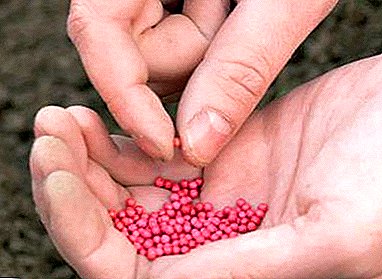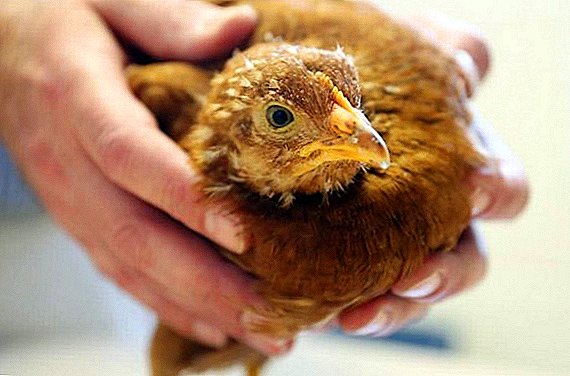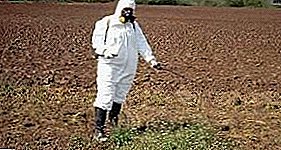
Nematodes are a type microscopic roundworms, whose diversity reaches more than 25 thousand species of nematodes. Some nematodes are completely harmless and freely exist in the land, sea or fresh waters, the rest lead a parasitic way of life, affecting animals or plants.
The latter live in damp earth or directly inside plant organisms.
The consequences of their lives are affected diseases parts of plants (from roots to buds and leaves), drying out and wilting, as well as the formation of so-called Gauls - malignant "nuts" or blistering on the leaves, soils, etc.
Nematodes significantly weaken the plantsinhibit the development and reduce their life cycle. If the worms begin to parasitize on the roots, the whole plant suffers. The fact that nematodes start in the garden can be understood by looking at the parts of the plant - unnatural thickening of the base of the leaves, growths on the leaves or a brown shade of the root system will tell about it.
Houseplants most often cannot be saved if infection nematode has already begun. What are the control measures?
The use of toxic substances in the indoor environment is not so much effective as detrimental to humans and pets.
Lost flowers are best right away throw away.
How to deal with nematode in the garden?
 Take care first prevention, in order for sure to prevent any occurrence of leaf nematodes on its site.
Take care first prevention, in order for sure to prevent any occurrence of leaf nematodes on its site.
It is advisable to select such varieties of plants that would be as stable as possible to the nematodes.
Regularly alternate cultures by crop rotation, watch the level of watering, keep the soil in a cool time not too wet, use steam sterilization.
Spray the leaves with water no later than six in the eveningso that they can dry before nightfall. In the summer, make sure that the plants have enough access to sunlight - ultraviolet destructive to most harmful nematodes.
Ways to fight
Against the stem nematodes fit manual ways. The most common victims of this type of worms are various ornamental flowers such as tulips, hyacinths or carnations. To prevent the spread of parasites, eliminate the affected plants along with the roots and burn them.
Optimal for bulbs thorough heat treatment: keep them in hot water for at least 10-15 minutes, then clean and dry before planting. Pots and other containers should also be washed in boiling water.
For example, the powerful aroma of small marigolds is extremely unpleasant to nematodes, and the root system of rudbeckia, gaillardia or coreopsis scare away worms special substances.
Some plant species have natural swellings or small growths on the roots, which serve as a kind of storage for nutrients. It is better to make sure that these are not the galls left by the nematodes so as not to ruin a healthy plant. For example, chlorophytum or arrowroot.
How to get rid of it in the soil?
How to get rid of nematodes in the soil? Root worms, which cause yellowish or brown galls on the rhizomes of plants, can also be controlled by preventive methods. When planting plants (especially succulents and shade-loving plants), use only sanitized garden tools.
 Do not plant plants chaotic gatherings, it is better to allocate each bush in a pot for a short quarantine.
Do not plant plants chaotic gatherings, it is better to allocate each bush in a pot for a short quarantine.
Warm or tillage hot steam not less than 40 minutes.
Each plant should be checked for any diseases or abnormalities.
The rhizomes of a newly acquired flower must be washed and left for 15 minutes to special solution.
You can use for this purpose a 0.5% solution fosdrin or 0.5% insecticide solution parathion. At the end of the procedure, rinse the roots again, let them dry out and transplant the plant into a new soil.
The most frequent plants exposed to roundworms are becoming aloe, cacti and greenhouse dwellers. They need attentive care and regular preventive measures to protect against nematodes.
How to deal with potato nematode?
If a potato nematode is found - how to deal with it?
What are the methods of dealing with them? Among the chemicals permitted for use on the territory of the Russian Federation is listed percalcite (improver). It has an effect on eggs and individuals of imago. A week before planting potatoes in the proportions of 200-300 g / cm2 to a depth of 10-15 cm under the ground the drug is being introduced.
Another remedy for the golden potato nematode is urea (urea). For an auxiliary effect, it is optimal to use 100 g / m2, one month before planting potatoes.
Preventive actions
You can significantly improve the nutritional quality of the land due to mulching. Pre-hay is considered an excellent feeding for beneficial microorganisms that will later protect the rhizomes of plants from nematodes and other pests. The layer of mulch should be about 10 cm.
Mulching with rotten hay to combat potato nematode - photo:

As in the case of garden or indoor plants, any tools like shovels need to be processed disinfectant solutions (formalin).
The ideal precursor for potatoes is ryewhich perfectly discourages roundworms. Also on the site cleared of infected tubers and tops should be grown winter rye, so she pacified the center of the spread of parasites.
Alternate planting potato varieties so that nematode-resistant varieties change in a few years. unstable. This will prevent nematodes from getting used or developed. It is best to fertilize the soil. wood ash or granular superphosphate.
About preventive measures, not to be left without a potato crop, you will learn from this video:
Means and preparations
How to get a nematode? There is a mass of systemic and contact poisons intended for spraying plants. Solutions are common among nematocides. mercaptophos, lindane, and methyl bromide, chloropicrin, carbation and organophosphorus compounds.
Systemic preparations penetrate the plant's body through the roots and already through the leaves and stems poison nematodes. Organophosphate compounds (phosphamide, karbofos, methylmercaptophos) sprayed on plant bushes or fruit trees to bring leaf and stem nematodes.
Phosphamide - A moderately hazardous substance for humans and animals, but very toxic for pollinating insects. It is effective against both garden mites or aphids, as well as roundworms. Fruit trees like apples and pears are sprayed with a 0.1% or 0.2% solution with a calculation of 0.8–4.0 kg per hectare, 0.8–3.0 kg is enough for cherries and plums. Processing must stop one month before harvest. The specialists do not recommend spraying next to greens, vegetables and berries.
Another remedy is BAK "Ecogel", environmentally friendly and safe, protects plants from various diseases, including gall nematodes. It is applied to the ground and has a detrimental effect on both eggs and adult worms. The duration of the effect is 3-9 weeks. Can soak the seeds before planting or spray the plants with 1% solution of "Ecogel".
 A drug "Nematophagin BT" based on predatory fungi and embedded in the soil (to a depth of 15-20 cm).
A drug "Nematophagin BT" based on predatory fungi and embedded in the soil (to a depth of 15-20 cm).
is he absolutely safe in comparison with chemical preparations, and mycelium of the fungus nematodes kill the worms after only a day.
Fighting it can be conducted with the help of the drug "Fitoverm". It is produced in the form of a 0.2% powder and, upon action on nematodes and their larvae, deprives them of the ability to eat normally. It is brought in soil under the infected plants.
If you follow the recommendations for sanitary preparation and fertilization of the soil, carry out frequent heat treatments of the soil, roots and seeds, you can secure your plantations from the spread of nematodes. Prefer plants with high immunityput near plant defenders (marigolds, rye) to scare away roundworms.


